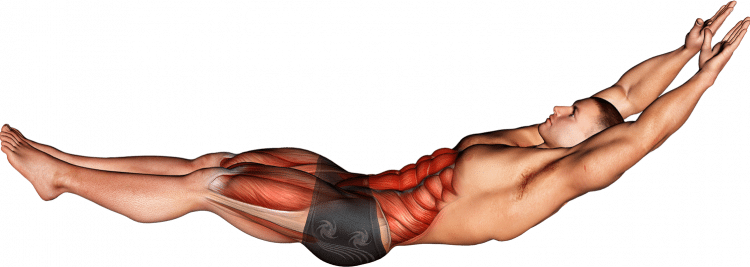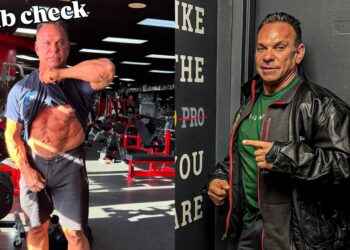When most people think about core and abs training, they tend to focus on the aesthetic benefits of having a lean, strong midsection. After all, many exercisers work out with the specific goal of developing washboard abs or a six-pack.
While there is absolutely nothing wrong with wanting to improve the way you look, the benefits of core training go beyond your appearance. A strong core will increase lumbar stability, improve workout performance, and could even lower your risk of injury.
To understand why core training is so important, consider this expression: “A chain is only as strong as its weakest link.”
In many exercises, that weak link is your core.
For example, when doing deadlifts, the aim of the exercise is to generate force with your legs and back and transfer that force to the barbell you’re lifting.
However, if you’ve got a weak core, your midsection may collapse, and some of the power generated in your lower body will get lost. If your hips rise faster than the bar during deadlifts, or squats for that matter, you probably need to work on your core strength.
Level Up Your Fitness: Join our 💪 strong community in Fitness Volt Newsletter. Get daily inspiration, expert-backed workouts, nutrition tips, the latest in strength sports, and the support you need to reach your goals. Subscribe for free!
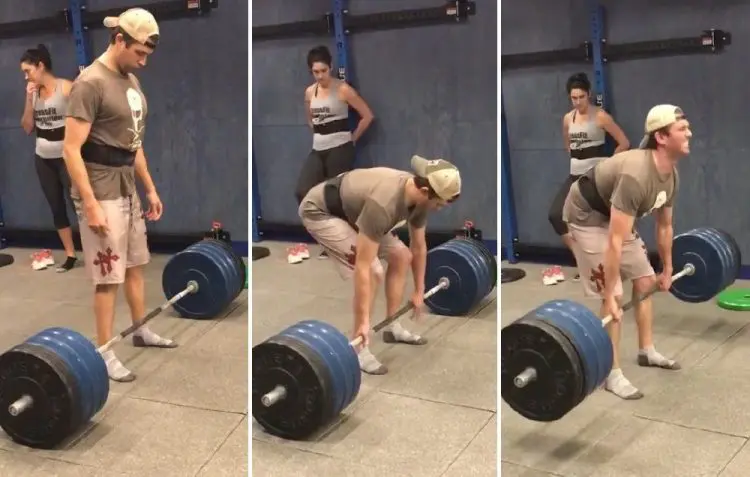
Not only does your collapsing core make for an inefficient exercise, making your workout less effective, it also exposes your lumbar spine to vast amounts of stress, and that could lead to injury.
Ideally, your lumbar spine should stay locked in place during most exercises, neither extending nor flexing. It should act as a rigid lever, transferring force from your lower body to your upper body, or vice versa.
There are literally hundreds of effective exercises you can use to strengthen your core muscles, but most people tend to rely on the same old movements that they’ve been doing for years. Unfortunately, if you do the same exercises often enough, they will eventually lose their potency.
Liven up your core workout with hollow holds; they’re a lot more challenging than they look!
Hollow Holds – Muscles Worked
Hollow holds are an isometric compound exercise which means there is no movement, but a lot of muscles and joints are involved. The main muscles that hollow holds work are:
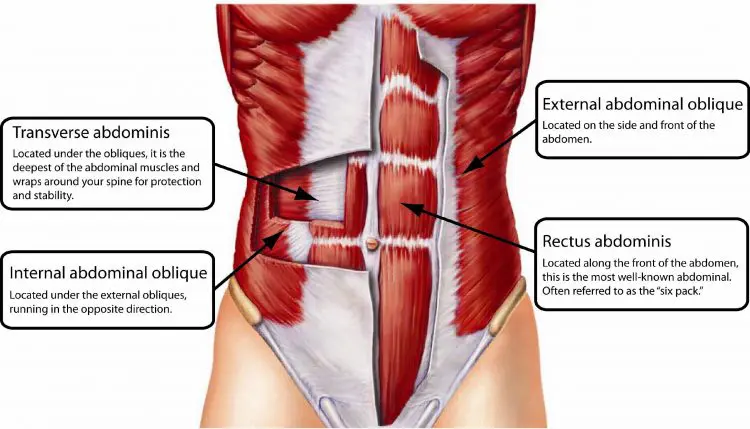
Rectus abdominis – located on the front of your abdomen and usually called the abs for short, this long, flat muscle is responsible for flexion and lateral flexion of your spine. The rectus abdominis is separated into sections by bands of ligamentous tissue, which is what gives it that distinct six-pack appearance. However, for this shape to be visible, you need to be very lean.
During hollow holds, the rectus abdominis works isometrically or statically, which means it generates tension but doesn’t produce any movement.
Transverse abdominis (TVA) – where rectus abdominis runs vertically up the front of your abdomen, transverse abdominis encircles your abdomen horizontally. TVA lies beneath the outer layers of abdominal muscles, so it’s not visible. However, you’ll definitely feel it working during hollow holds.
Acting much like a corset or weightlifting belt, the TVA contracts inward to create intra-abdominal pressure, or IAP for short. This pressure then supports and stabilizes your spine, taking pressure off your intervertebral disks.
Internal and external obliques – the obliques are basically your waist muscles, and their main job is lateral flexion and rotation of your spine. Your internal obliques lie beneath your external obliques. During hollow holds, their main job is to act as a stabilizer to prevent unwanted wobbling.
Iliacus and psoas major – collectively known as iliopsoas, these two muscles are your hip flexors. In fact, that’s what a lot of people call them; the hip flexors. Like all the other muscles involved in hollow holds, your hip flexors work isometrically during this exercise.
Quadriceps – the legs are held perfectly straight during hollow holds, which is a job for your quadriceps or quads, which are the muscles on the front of your thighs. The four quads are vastus lateralis, vastus medialis, vastus intermedius, and rectus femoris. Of these four, the rectus femoris also works with your hip flexors to keep your legs raised.
How to Do Hollow Holds
Get more from hollow holds while keeping your risk of injury to a minimum by following these guidelines:
- Lie on your back and extend your arms overhead, so your biceps are next to your ears. Straighten your legs and point your toes, knees, and feet pressed together.
- Brace your core by drawing your ribs toward your pelvis and flexing your abs. Inhale and draw air down into your abdomen. You should feel your entire midsection solidify and become rigid.
- Lift your feet, legs, shoulders, and arms off of the floor and press your lower back into the ground. The only point of contact should be your lumbar spine region, which is roughly the lower third of your spine, from the tailbone to the mid-back area. Look down your body to your feet; do not tuck your chin into your chest.
- Hold for just a few seconds and then relax, working up to longer holds as you get stronger.
Hollow Hold Benefits and Drawbacks
Not sure if hollow holds are for you? Check out these advantages and benefits:
Anywhere, anytime – with no equipment required, hollow holds are a very convenient exercise. You can do them at the gym, at home, at the park, or anywhere else you have enough space and a few minutes to lie down. It’s the ultimate excuse-free core exercise.
Scalable – hollow holds are an intermediate/advanced exercise but, because you can change the length of the levers involved, you can regress it to make this move easier or progress it to make it harder.
Level Up Your Fitness: Join our 💪 strong community in Fitness Volt Newsletter. Get daily inspiration, expert-backed workouts, nutrition tips, the latest in strength sports, and the support you need to reach your goals. Subscribe for free!
If you cannot do hollow holds for more than a few seconds or are unable to keep your lower back pressed into the floor, try these variations, moving on to the next one only when you are ready.
Highly functional – in nature, your midsection muscles often have to work to prevent extension. As an isometric exercise, hollow holds fulfill this function. Getting better at this move will have a positive impact on your performance of many other exercises, as well as activities outside of the gym.
Easy on your joints – one of the main criticisms of sit-ups and crunches is that they involve repetitive flexion and extension of your spine. This can lead to wear and tear, overuse injuries, and lower back pain. Because they involve no movement, hollow holds should not cause this problem. That said, done incorrectly, this exercise still has the potential to cause injury.
Precursors for advanced calisthenic exercises – if you want to be able to do things like front lever raises, one-arm pull-ups, planches and planche push-ups, and other advanced calisthenic movements, you need to master the hollow hold first. If you cannot stabilize your spine, you won’t be able to do these exercises, and trying them will probably lead to injury.
While hollow holds are a mostly beneficial exercise, there are also a few drawbacks to consider:
A tendency to arch the lower back – one of the most important things to remember during hollow holds is to press your lumbar spine into the floor. There should be no space between your lower back and the ground. An arched lower back could lead to injury. Stop your set if you feel your lower back lifting or use one of the easier alternatives elsewhere in this article.
Hyperextended neck – unlike many abs and core exercises, you do not use your arms to support your head during hollow holds. This can lead to hyperextension of the neck, which could result in neck pain or even injury. Avoid this problem by lowering your chin and looking down your body at your feet. This will take pressure off your neck.
Breath holding – with exercises that involve movement, breathing tends to come naturally, e.g., breathe in as you lift, exhale as you lower. Because hollow holds are isometric, there are no obvious cues for breathing, so some people may mistakenly hold their breath. This causes a significant rise in blood pressure.
While your BP should go back to normal when you relax, pushing it up even higher is not a good idea if you already have high blood pressure. Avoid this problem by breathing shallowly throughout the exercise.
7 Hollow Hold Variations and Alternatives
Avoid getting bored of hollow holds, and make sure your core continues to get stronger with these hollow hold progressions, variations, and alternatives.
1. Hollow rock
The hollow rock is a more dynamic version of hollow holds. With this exercise, you shift your weight and rock along your lower back, transferring your weight from the upper part of your core to the lower. This isn’t necessarily a better exercise than standard hollow rock holds, but it’s a little harder and provides some useful variety.
How to do it:
- Lie on your back with your arms above your head, biceps next to your ears, and legs straight. Point your toes and squeeze your legs together.
- Brace your abs and push your lower back into the floor. Lift your legs and shoulders/arms a few inches off the floor.
- Without changing the angle of your arms or legs, rock gently while maintaining core stability. Remember to breathe; no breath-holding, please!
2. Weighted hollow holds
Once your own bodyweight no longer provides enough of a challenge, you can do hollow holds with a weight in your hands and another weight resting on your thighs.
Alternatively, just hold a weight in your hands. Needless to say, with the long levers involved in this exercise, a little weight goes a long way, so resist the temptation to go too heavy, too soon. Otherwise, you may find that your lower back lifts off the floor.
3. Hollow plank
While there is nothing wrong with regular straight body planks, if you want to continue working on your hollow position strength, hollow planks are the way to go.
How to do it:
- Kneel on all fours, with your knees under your hips and hands under your shoulders.
- Tuck your tailbone under so you feel a stretch through your lower back.
- Maintaining this position, pull your abs in and allow your back to round until your spine forms an arch from your neck to the lumbar spine.
- Once you are in this upside-down hollow position, extend your legs until you are in a rounded plank position.
- Hold for as long as you can maintain your position.
- You can also do this exercise while resting on your elbows instead of your hands.
4. Hollow hold press
This intense core exercise combines the hollow hold with floor presses. Needless to say, you should only attempt this exercise if you have completely mastered static hollow holds.
How to do it:
- Lie on your back with your legs straight and together, toes pointed. Brace your abs and press your lower back into the floor. Hold a dumbbell in each hand and press them up to arms’ length. Raise your feet a few inches off the floor, pressing your lower back into the floor. This is your starting position.
- Bend your arms and lower the weights until your triceps lightly touch the floor.
- Press the weights back up and repeat.
- Add an extra element of instability and difficulty to this exercise by using an alternating arm action.
5. Boat pose
Where hollow holds come from gymnastics and Pilates, boat pose comes from yoga. It’s a similar exercise, but you may find it a little easier because of the more forgiving leg/torso angle. However, it requires greater hamstring flexibility.
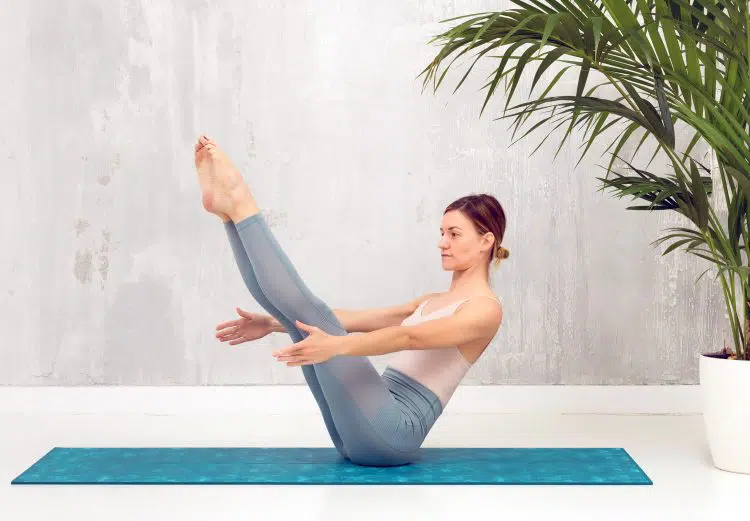
How to do it:
- Sit on the floor with your legs bent and your torso upright. Extend your arms so that they are parallel to the floor.
- Keeping your weight on the back of your sacrum, extend your legs until they are straight, and your body forms a V-shape.
- Without holding your breath, maintain this position for as long as possible.
- You can make this exercise by keeping your legs bent, working toward straightening them as you get stronger.
6. Hanging hollow hold
Take your hollow hold training to a whole new level by hanging from a pull-up bar. You’ll have to lift the entire weight of your legs, making this a much more challenging exercise. This is an excellent gateway exercise to front lever raises and other hardcore calisthenic exercises.
How to do it:
- Hang from a pull-up bar using a shoulder-width, overhand grip. Pull your shoulders down and back and brace your core.
- Contract your abs and draw your pelvis toward your sternum, flexing your spine into a shallow c-shape. Keep your legs straight and allow your feet to move slightly forward of your hips. Do not use your hip flexors too much to raise your legs; any movement should come from your abs shortening and not your hips flexing.
- Hold this position for as long as possible, taking care not to hold your breath.
- You can also do this exercise using a captain’s chair, and supporting your weight on bent arms/elbows.
7. L-sit pull-ups/chin-ups
Your final hollow hold variation/alternative combines pull-ups with an L-sit, which is another intense core exercise. During this exercise, you use your core and hip flexors to raise and hold your legs up while you do pull-ups or chin-ups to work your lats and biceps. This is a challenging exercise but also very rewarding.
How to do it:
- Hang from your pull-up bar using a shoulder-width overhand grip (pull-up) or a narrower than shoulder-width underhand grip (chin-ups). You can also do this exercise using a neutral (palms inward) grip if your pull-up bar has the appropriate handles.
- Pull your shoulders down and back. Brace your abs and lift your straight legs up until they are parallel to the ground.
- Bend your arms and, without lowering your legs, pull your chin up and over the bar. Slowly and smoothly extend your arms and repeat.
- If you find it too challenging to keep your legs up, lower and then raise your legs between pull-ups. You can also do this exercise with bent knees.
Hollow Hold – Wrapping Up
Hollow holds are a challenging core exercise, but they’re worth learning and mastering because, once you are strong enough to do them, it opens up a whole new library of demanding core exercises to try.
That said, to develop the ultimate abs, both in terms of appearance and function, you also need to do exercises that involve flexion of your spine, as well as lateral flexion and rotation. Even the mighty hollow hold can’t replace those other movements.
Work on hollow holds and their variations and alternatives, but make sure you combine them with a well-rounded selection of other core exercises. That way, your abs will be strong in all directions.
Interested in measuring your progress? Check out our strength standards for Push Ups, Floor Press, Sit Ups, and more.

